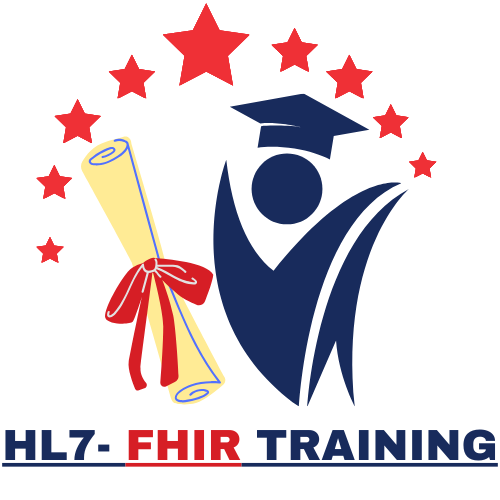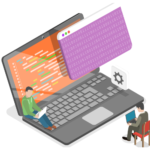FHIR Corporate Training – Fast Track Your Team’s Interoperability Readiness
Enterprise Training on HL7 FHIR Corporate for Healthcare IT Teams
Our FHIR Corporate Training is your organization's key to mastering the latest healthcare data exchange standard — FHIR (Fast Healthcare Interoperability Resources). Built for teams working with modern APIs, EHR integration, mobile health apps, or analytics, this course delivers both strategic understanding and deep technical skills.

🧩 FHIR Corporate Training Curriculum---6 Days (4 Hours per Day )
FHIR Corporate Training Course Aims
This course is for FHIR programmers, interface developers and dedicated Implementers and is designed to provide the skills for the analysis testing, problem tracking and activation of phases of a FHIRproject. Attendees will learn FHIRdesign, message formatting rules, data types, enhanced acknowledgement rules, identifiers. Course work includes hands on exercises.
On completion of this course, attendees will have gained a deep understanding of FHIRstandard processes and practices, with the ability to effectively read, understand, analyse, design, develop, market and test FHIRresources.
We will also have some quizzes in between to make sessions more interactive.
Server Requirements
- Server that can access FHIR HAPI server
- Postman
- SmartHL7 viewer
- Access to clinFHIR
- SQL server
- Mirth Connect
- Java – 1.8
- Notepad++
- VSCode
Required Basic knowledge
- Nothing specific, basic knowledge about RESTAPI’s and JSON
Session – Introduction to FHIR – 1 hour
Objective
This session will give an understanding of why FHIR is used in healthcare and the goals that are achieved.
- Hospital Workflow
- Purpose of FHIR
- Use case scenario to solve problem
- Licensing and IP
- FHIR Material overview
Session –FHIR Resources – 3 hours
Objective
These sessions give an understanding of what FHIR is and its concepts. It introduces Resources and then goes into the building of FHIR messages and the elements involved in the object construction. It goes into detail of the structure. We will have hands-on using VSCode to create a resource
- Resources – Patient Resource
- Understanding Resource structure
- Resource Identity and Elements involved
- Narrative and Discrete sections
- Interpreting Flags and Icons
- Base resources – Domain Resource and Resource
- Resource references
- Searching for Resources– Basic
- Maturity levels
- Constructing a resource using Schema
Session – REST Services and other Paradigms of FHIR - 4 hours
Objective
These sessionsdetails of how do we use REST services in REST paradigm of FHIR. We will have hands-on using Postman/Insomniaand interacting with HAPI FHIR server
- REST Services – Introduction to REST
- How and Why FHIR is loosely REST?
- Basic REST Principles
- Interaction in FHIR
- Instance Level
- Type Level
- Whole System Level
- URL Structure and Searches (Advanced)
- CRUD Operations
- Additional Operation
- Conditional Create
- Security protocols overview
- Basic Authentication
- OAuth 2.0
Session – Other Resource structure and workflows – 2 hours
Objective
These sessionsdetails of other resources and their structure and workflow examples. Will have hands-on using ClinFHIR
- Practitioner
- Observation
- Medication Statement
- Diagnostic report
- Appointment resource
- Workflows using above resources
- Bundle Resource
Session – Special Resources/Concepts – 2 hours
Objective
These sessions details of other special resources and their structure and workflow examples. Hands-on using Postman/Insomnia
- Contained Resources
- Bundled Resources
- Resource Life cycles
- Extensions
Session – Data Types – 1hours
Objective
This session details of Data types concepts which are basic building blocks of the elements
- Understanding the importance of Data Types
- Primitive Data Types – Uses and rules
- Complex Data Types – Uses and rules
Session – Terminology – 3hours
This session details of the concepts of Terminology overview and how to use public servers
- Understanding the usage of Terminologies
- Code system
- Value sets
Session – Mirth and V2 to FHIR Conversions – 5 hours
Objective
These sessionsare to understand how to use an Interface Engine like Mirth Connect to convert HL7 V2 messages to FHIR and post them.Hands-on using Mirth Connect
- Introduction to Application and workflow
- Building a channel/Interface using http connectors
- E4x and JavaScript
- Filters and Transformers
- Conversion of HL7 V2 to FHIR and posting to HAPI server
Session – Conformance and Profiling – 2 hours
Objective
These sessionsdetails aboutconformance related topics and profile building concepts
- Profiling and its concepts
- Capability statement
- Structure Definition
- Implementation guide
Session – Preparation for certification – 1 hour
Objective
These sessionsdetails on topics that you have to go thru for completing your certification.
- Overview of the exam
- Weightage for individual topics
- Sample questions
Who Should Attend?
Healthcare Developers & API Engineers
EMR/EHR Vendors and SaaS Providers
Health Data Analysts & Architects
QA/Testers validating FHIR-based APIs and apps
Training Highlights
From foundational FHIR concepts and standards to enterprise-grade implementation. Teams will understand how FHIR works under the hood, explore use cases, and gain practical experience with real-world healthcare APIs.
Flexible instructor-led sessions that adapt to your team’s schedule and location. Whether remote or on-premises, each session encourages active participation and use-case-based learning.
Trainees will interact with public FHIR servers, perform real CRUD operations using Postman, design resource queries, simulate EHR integrations, and develop SMART on FHIR app prototypes.
Each participant will receive a professionally designed certificate of completion, validating their acquired FHIR skills for audits, internal documentation, and resumes.
Post-training support is available for 3 months to help with implementation questions, technical troubleshooting, or additional clarification — via email and chat.
Participants receive a rich set of assets including sample APIs, Postman collections, test datasets, curated documentation links, and optional code examples in Python or JavaScript.
FHIR Training 🔶FAQ
Q1: Is this course suitable for teams with no prior FHIR experience?
A1: Absolutely. We start with foundational concepts before progressing into hands-on integration exercises.
Q2: What tools are used during the training?
A2: Postman, public FHIR servers, and optionally, Python or JavaScript for sample code and validation.
Q3: Can the curriculum include SMART on FHIR Corporate Training ?
A3: Yes, we can include SMART workflows and OAuth2 integrations for app development.
Q4: Is this training compliant with certification prep like ONC or TEFCA?
A4: While not a certification course, it aligns with ONC and TEFCA requirements and best practices.

–Priya K., Hyderabad
Healthcare Integration Consultant⭐⭐⭐⭐⭐"Structured and Comprehensive!" “The FHIR training helped me understand APIs and RESTful architecture in a simple, practical way. The examples and sandbox exercises were fantastic for real-world application.</p>

– Vikram S., Pune
Software Developer⭐⭐⭐⭐⭐"Perfect for Developers!" “Coming from a software background, this FHIR course bridged the gap between tech and healthcare. The trainer explained resources, bundles, and profiles with great clarity. Loved the coding exercises!”</p>

— Ankit J., Mumbai
Health care Proffesional⭐⭐⭐⭐⭐ "Value for Money with Real Projects!" “I appreciated the mix of theory and project-based learning. Working with Mirth Connect and HL7 messages gave me the confidence to apply what I learned on the job.”
📚Helpful Resources Section:
-
🔗 HL7 FHIR Overview – Official HL7 Site
Explains the basics of FHIR from the standards organization itself.
-
🔗 SMART on FHIR – smarthealthit.org
Adds authority around app integrations using SMART on FHIR.
-
🔗 ONC Interoperability Standards
Office of the National Coordinator for Health IT – excellent for credibility on U.S. health data exchange.
-
🔗 FHIR Tools and Test Servers – Simplifier.net
Trusted platform to explore, test, and validate FHIR resources.







